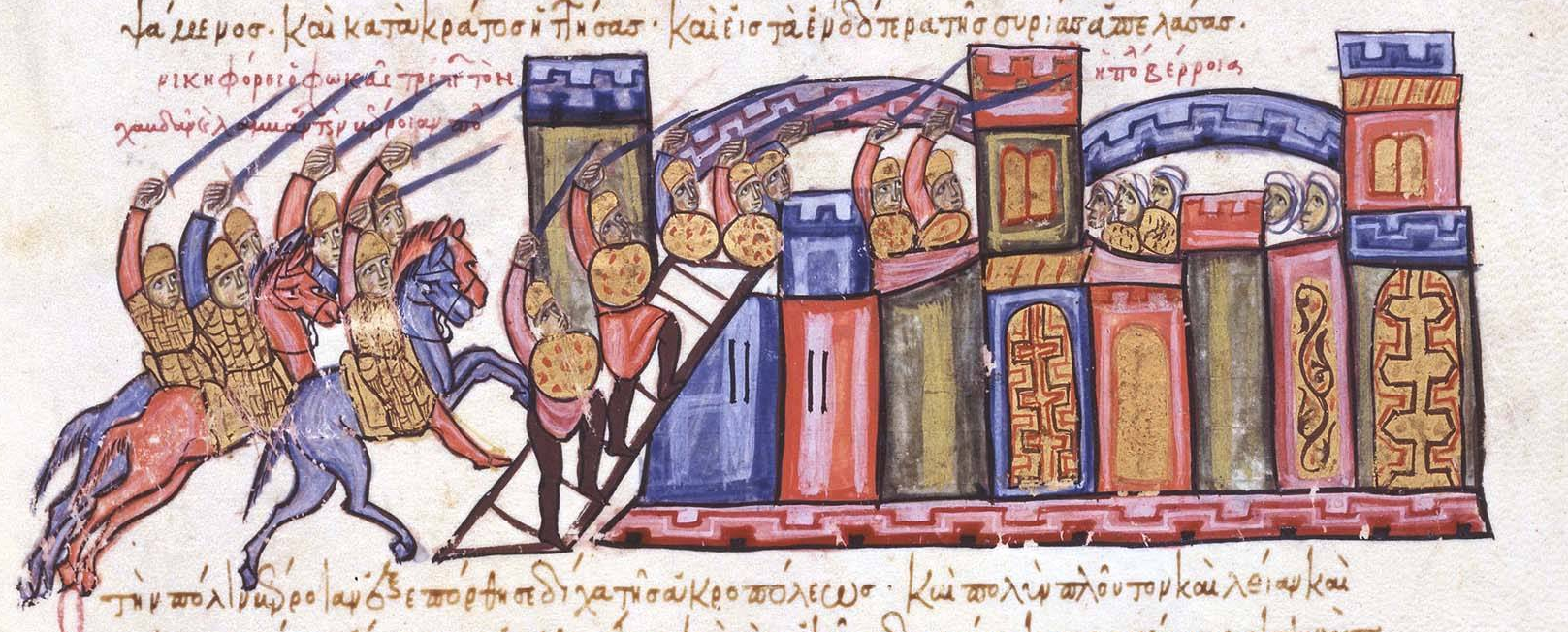PDF
Download
Citations
Click and drag then release to select a passage to cite.
Annotations
How to submit annotations to Mizan Journal articles:
your work is published.
Search within
Editor’s Introduction

Image
Audio
Video
Chart or Graph
Editor’s Introduction
The Byzantine emperor Nikephoros II (r. 963-69) conquered the Anatolian town of Tarsus in 965, and in exchange for a peaceful surrender, its Muslim residents were allowed to pack up their belongings and move to Antioch and other parts of Anatolia that were under Muslim rule. By the end of the year, Antioch was in open rebellion against its ruler, the emir of Aleppo and in 969, fell to the advancing Byzantines. Later historians blamed the defeat on the refugees from Tarsus.
Based on a close reading of the primary sources, Joshua Mugler suggests that the ambitions of imperial powers and the Antiochian elite played a more significant role in securing the Byzantine victory than hitherto considered. Drawing on new insights from the field of migration studies, Mugler argues that historians must treat past refugees with the same empathy that is extended to contemporary victims of forced migration, neither stripping them of all agency nor blaming them for negative outcomes over which they had no control.
The thirteenth-century life of Farid al-Din ‘Attar (d. 1221), both the best known and the least known Sufi from the city of Nishapur is reexamined in Richard Bulliet’s “Farid al-Din Attar, the Man: Two Views.” In Bulliet’s telling, Attar’s masterpiece Manteq al-Tayr (Conference of the Birds), is a meditation on Nisahpur’s fall, a city ravaged by nomads and bandits, earthquake, and internecine war. The plight and near hopelessness of the birds traversing seven valleys in their search for the Simurgh, echoed the poet’s grief at the devastation that engulfed him. Attar could not have envisioned the birds’ progression through the seven valleys if he had not, in some sense, already traversed the valleys himself. As he is not known to have travelled outside his hometown, his journey signals a lengthy, and surprisingly fecund period of meditation on his unending experience of Nishapur’s destruction, a deep dive into the dreams of his past and present—a Freudian vignette avant la lettre.
Editor’s Introduction
The Byzantine emperor Nikephoros II (r. 963-69) conquered the Anatolian town of Tarsus in 965, and in exchange for a peaceful surrender, its Muslim residents were allowed to pack up their belongings and move to Antioch and other parts of Anatolia that were under Muslim rule. By the end of the year, Antioch was in open rebellion against its ruler, the emir of Aleppo and in 969, fell to the advancing Byzantines. Later historians blamed the defeat on the refugees from Tarsus.
Based on a close reading of the primary sources, Joshua Mugler suggests that the ambitions of imperial powers and the Antiochian elite played a more significant role in securing the Byzantine victory than hitherto considered. Drawing on new insights from the field of migration studies, Mugler argues that historians must treat past refugees with the same empathy that is extended to contemporary victims of forced migration, neither stripping them of all agency nor blaming them for negative outcomes over which they had no control.
The thirteenth-century life of Farid al-Din ‘Attar (d. 1221), both the best known and the least known Sufi from the city of Nishapur is reexamined in Richard Bulliet’s “Farid al-Din Attar, the Man: Two Views.” In Bulliet’s telling, Attar’s masterpiece Manteq al-Tayr (Conference of the Birds), is a meditation on Nisahpur’s fall, a city ravaged by nomads and bandits, earthquake, and internecine war. The plight and near hopelessness of the birds traversing seven valleys in their search for the Simurgh, echoed the poet’s grief at the devastation that engulfed him. Attar could not have envisioned the birds’ progression through the seven valleys if he had not, in some sense, already traversed the valleys himself. As he is not known to have travelled outside his hometown, his journey signals a lengthy, and surprisingly fecund period of meditation on his unending experience of Nishapur’s destruction, a deep dive into the dreams of his past and present—a Freudian vignette avant la lettre.


